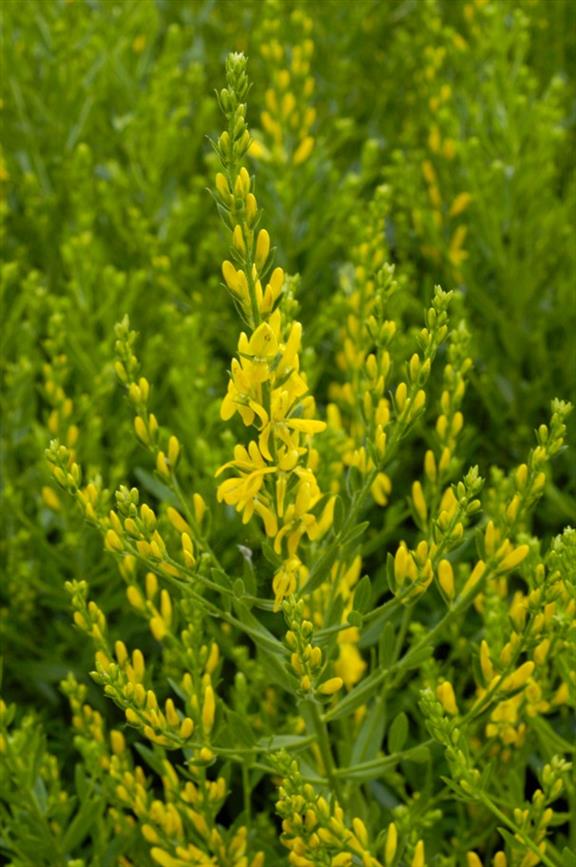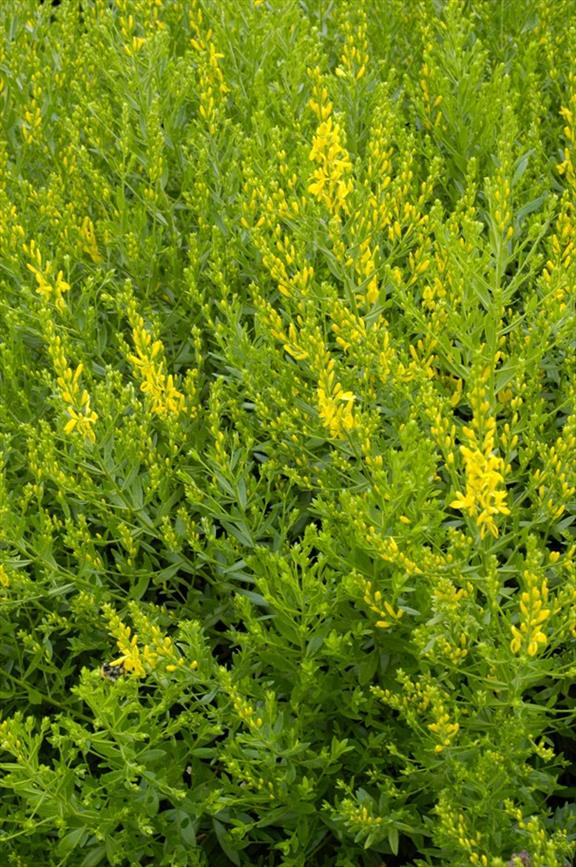Dyer's Greenweed
Genista tinctoria
Bean family (Fabaceae)
Generous with colour
In the Middle Ages an infusion of the deep-yellow flowers was used to dye wool and linen yellow. Dyer’s greenweed, a low growing shrub with attractive elongated leaves, prefers dry to fairly damp habitats, whether or not it is the calcareous soils of dune valleys or heath land. Insects that are attracted to the flowers primarily collect pollen, nectar-seeking bees also visit but often in vain as this flower offers little nectar.
In the Netherlands, dyer's greenweed has become very rare. This species is adversely affected by air pollution and the resulting increase in grasses. It is however surviving best along the coast in the naturally calcareous environments of North-Kennemerland and on the edge of wet heath and dune valleys on Texel, Terschelling and Ameland. Inland its decline has been nothing short of dramatic.
Read more.... »Themes
Crown jewel in the De Kruidhof Botanic Garden.
Formerly used as a medicinal herb.
Visitors to the flower are primarily pollen collecting bees as well as the occasional honey bee looking in vain for nectar.
Dyer’s broom has been used since the Middle Ages to dye wool and linen yellow with an infusion made from the flowers (tinctoria means ‘paint’).
Details
| Description: | Shrub, up to 0.60 (-1) m. |
|---|---|
| Distributions: | Europe, western asia |
| Habitat: | Dune valleys and heathlands, dry to fairly damp conditions, on calcareous and non calcareous soils. |
| Year cycle: | Perennial (trees and shrubs included) |
| Hardiness: | 34 - 41 f (tender - cool or frost-free glasshouse) |
| Flowering period: | Juni - augustus |
| Flower color: | Yellow |
| Notes on flowers: | Large, deep yellow flowers in racemes. |
| At its best: | Juni - augustus |

